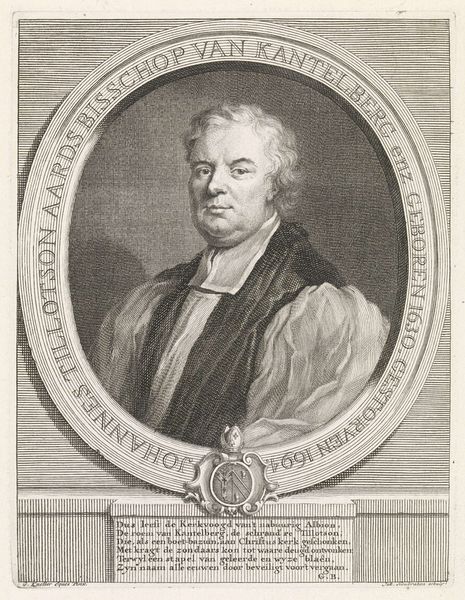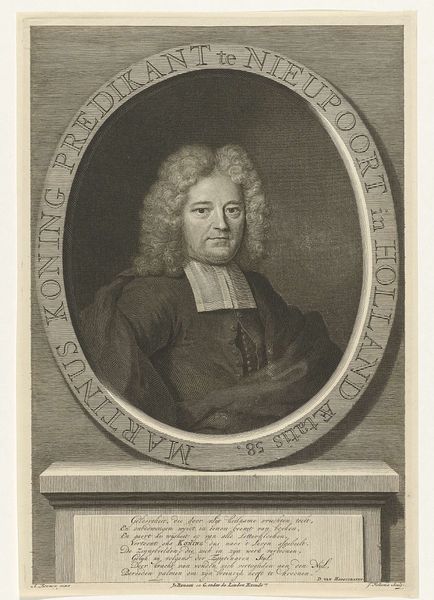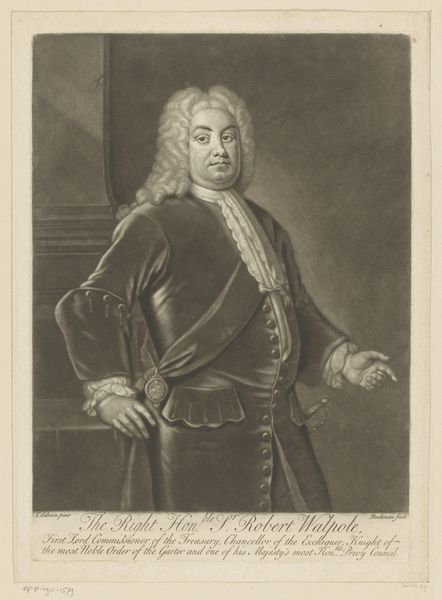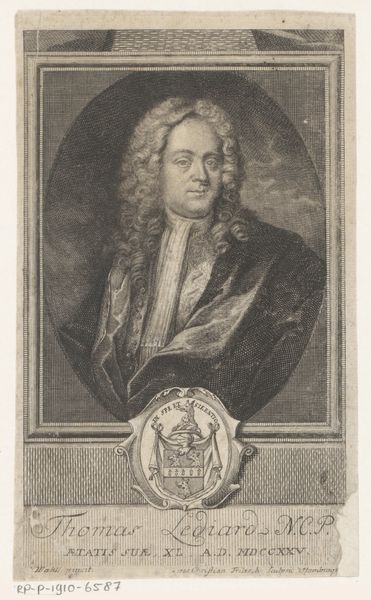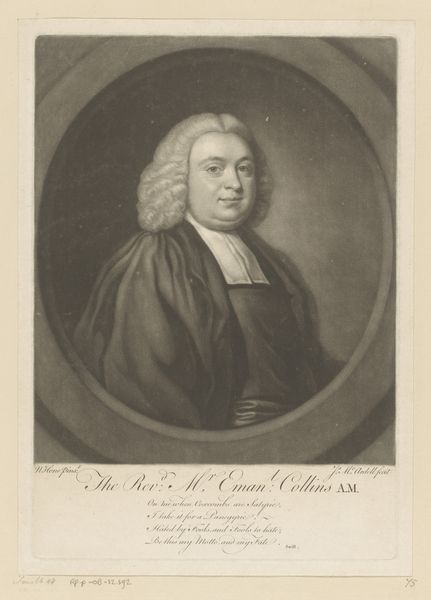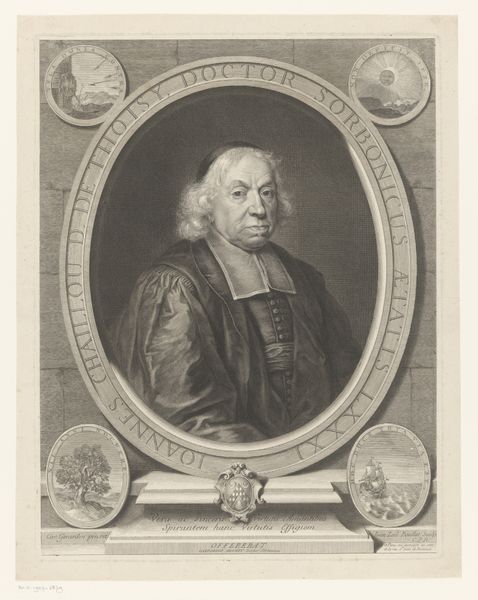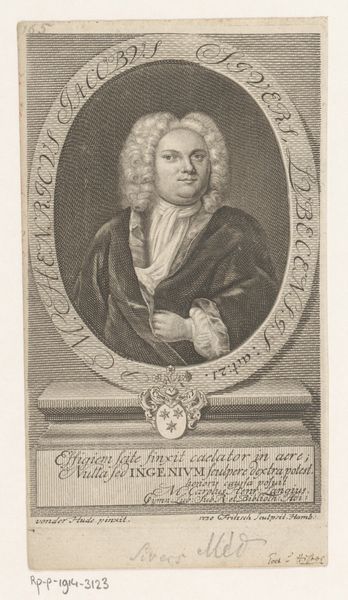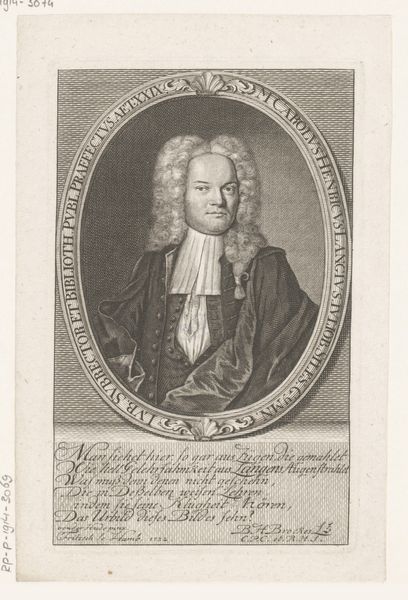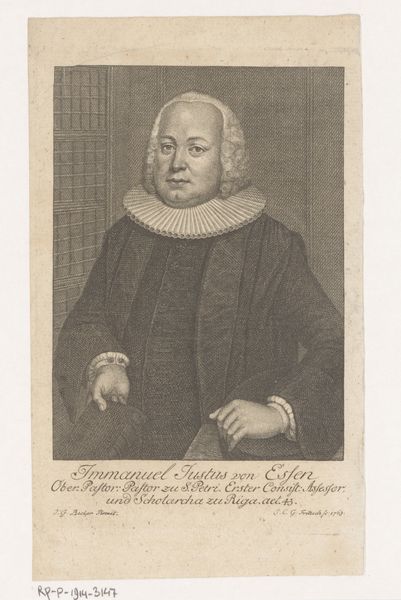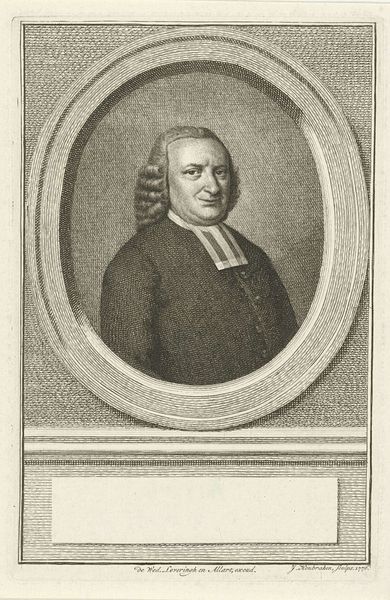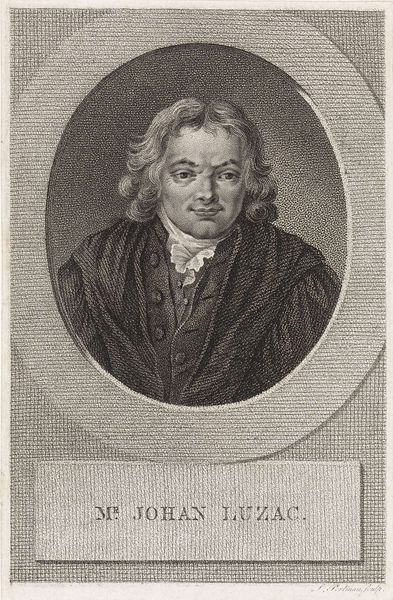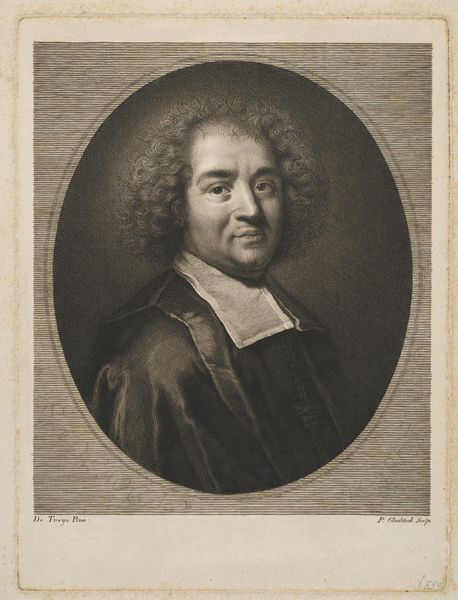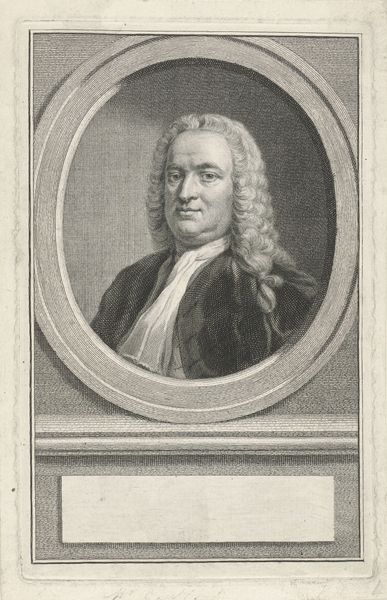
engraving
#
portrait
#
baroque
#
old engraving style
#
historical photography
#
line
#
portrait drawing
#
history-painting
#
engraving
#
realism
Dimensions: height 365 mm, width 253 mm
Copyright: Rijks Museum: Open Domain
Editor: This is "Portrait of Herman Boerhaave," made sometime between 1715 and 1766, created with an engraving technique by George White. It's a very direct image; I’m immediately drawn to his gaze. What can you tell me about this piece? Curator: It's crucial to see this portrait as an artifact of its time, reflective of both its subject and the means of its production. Consider the engraving process itself, the labor involved in replicating this image, and how it facilitated the dissemination of Boerhaave’s likeness and, by extension, his ideas. How do you think the choice of engraving, as opposed to painting, impacts the viewer's understanding of Boerhaave's status? Editor: I guess an engraving makes it feel more… accessible? Like it was meant to be shared widely. Was it common to depict academics this way? Curator: Precisely. Engravings allowed for wider distribution and consumption compared to unique painted portraits, positioning Boerhaave within a growing intellectual community. We can even see him, with his scholarly attire, as a kind of "brand," a symbol of Enlightenment knowledge, reproduced for the consumption of an increasingly literate public. The labor of the artist and the engraver—how does that contribute to or challenge our notion of genius here? Editor: So, it's less about artistic genius and more about the wider cultural impact achieved through reproducible means. It redefines what we value in art, I see what you mean. Curator: Exactly! By focusing on the material conditions of its creation, we move away from celebrating individual genius and toward understanding how art actively participates in shaping social and intellectual landscapes. How might understanding this process shift our appreciation? Editor: It gives you a richer understanding of the artist, and maybe even challenges you to reconsider conventional methods. Thanks!
Comments
No comments
Be the first to comment and join the conversation on the ultimate creative platform.
